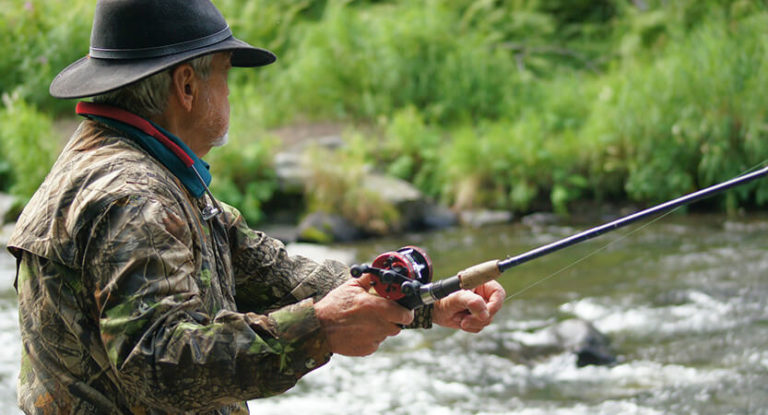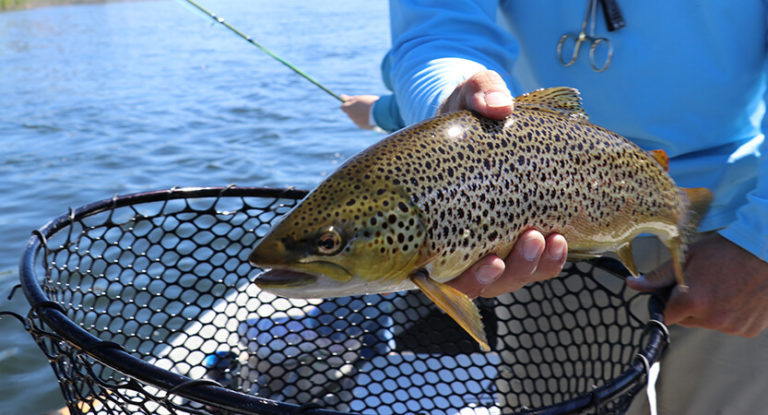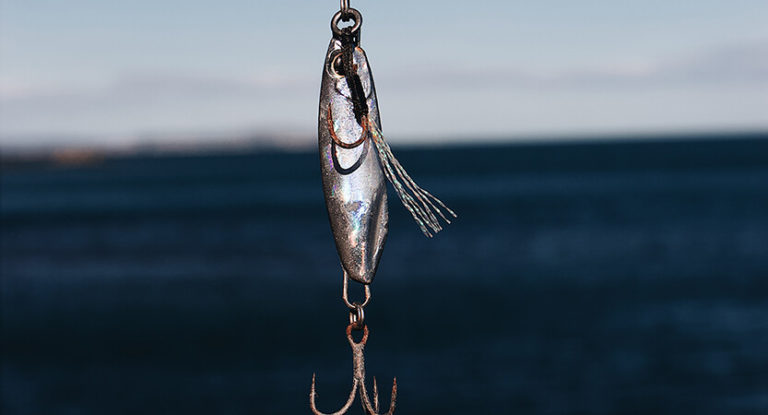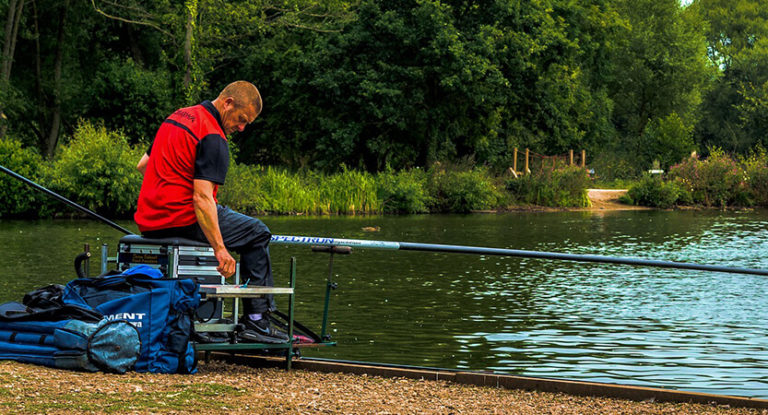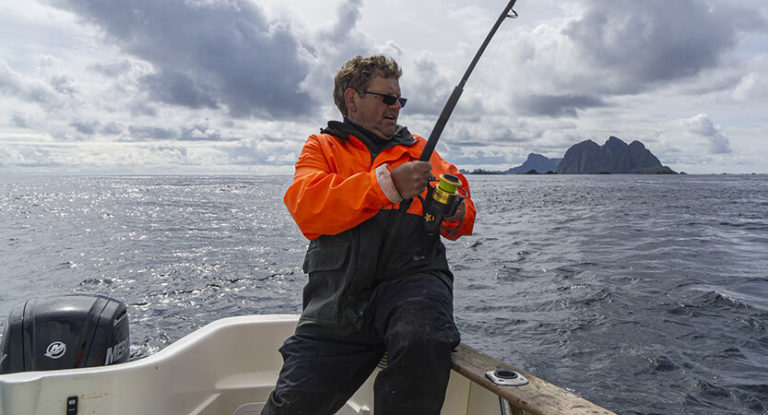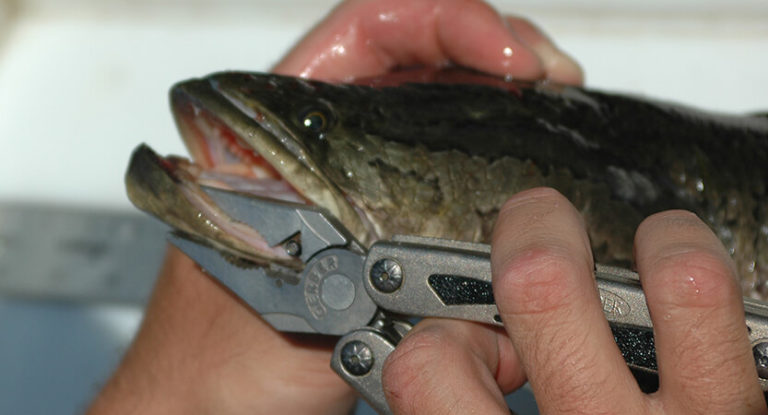Hunting is worse than bondage – says popular wisdom. This saying can be used in the application to fishing. Severe frost, blizzard, and other “delights” do not always stop true fans striving for the ice with tackles. Fishing in the wilderness has a number of features and does not always end effectively – many anglers return home without a catch.
Nevertheless, knowing some secrets, techniques and fishing tactics, you can catch a lot of fish during this period. You need to understand that a lot depends on the choice of the reservoir, the technical equipment of the process, the nuances of the equipment and the behavior of the angler. Even when this period comes, an experienced angler can adapt to it and get a lot of trophies to the envy of neighbors on the ice.
Here is an overview of the content of this tutorial, feel free to jump to any section you care about:
For more fishing instructions, take a look at these popular Trizily links: Best Fish Finders, Best Fishing Lines.
Reasons for a decrease in bite in the wilderness
It is difficult to say exactly when the wilderness begins for fishing in a particular region – there is no year after year. Nevertheless, it is generally accepted that this is the period covering January and February – the time when the fiercest cold is, and the water bodies freeze to the maximum depth.
From what to what date this happens, the most experienced angler will not say, especially in current conditions. The winters have become warmer, the period of freeze-up and deafness has decreased, respectively. Many reservoirs and rivers of the European and American are now covered with ice not every year.
However, in winter, the fish becomes inactive. There are several reasons for this:
- Minimizing the amount of feed . It’s getting harder and harder to find something edible. The fish conserves energy and tries to move less.
- Decrease in water temperature . All fish are cold-blooded creatures, they depend to the maximum extent on the ambient temperature. Low temperatures favor, perhaps, cold-loving burbot.
- Decrease in the amount of oxygen in the water . The ice crust is growing, the volume of free water is decreasing, and there is practically no oxygen flow from the air. The situation is further complicated by the rotting of the underwater flora, accompanied by the release of carbon dioxide.
Most of the representatives of freshwater ichthyofauna in this harsh period go to great depths, in wintering pits. They fall into a drowsy daze, preferring to move as little as possible. The same carp or crucian carp rests all winter, representatives of other species occasionally feed, but it takes a lot of effort to attract their attention.
General principles of fishing
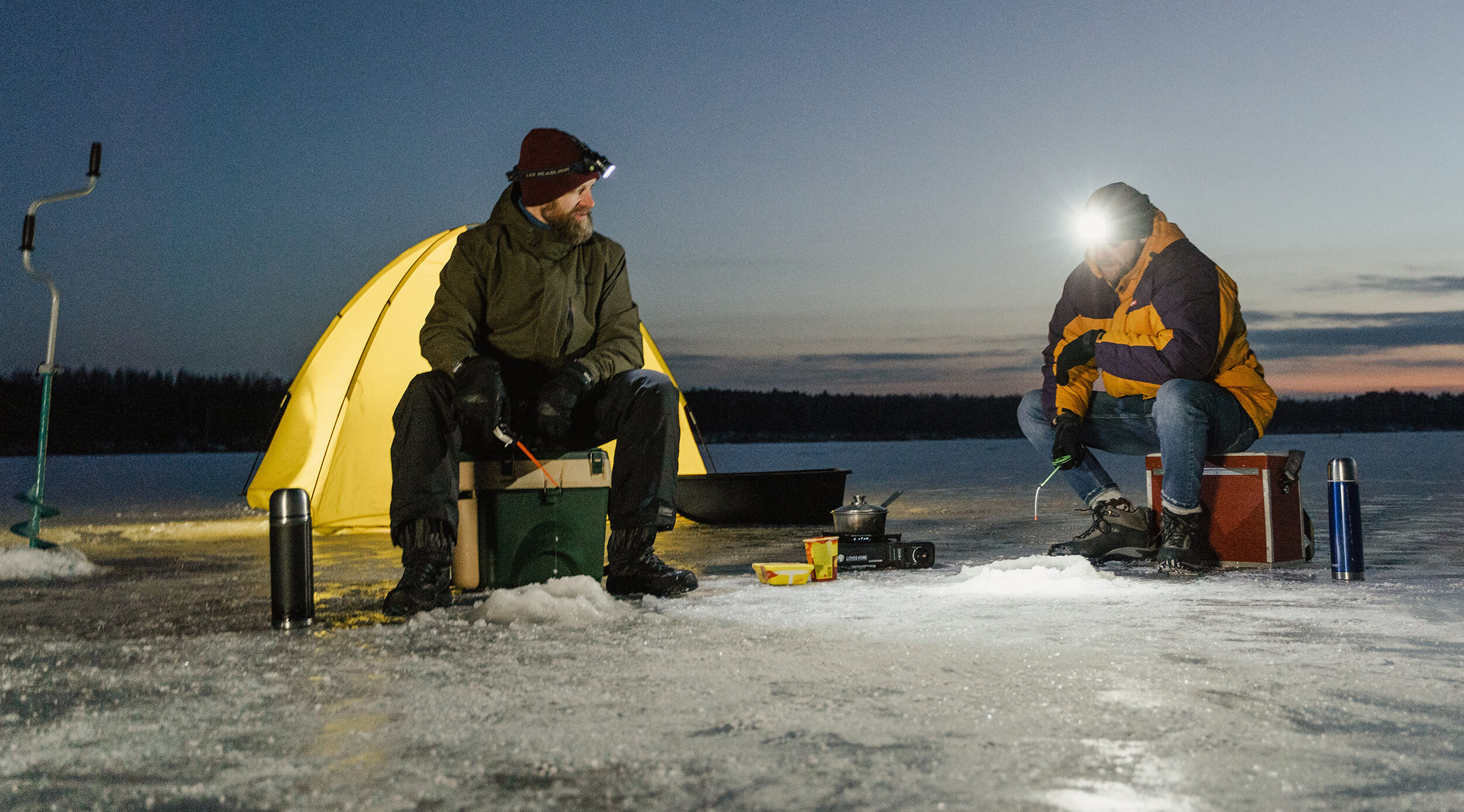
The more passive the fish, the more active a person should be, who wants to catch it. During this period, there is nothing special to do on ponds and shallow lakes: many of them freeze almost to the bottom, the amount of oxygen in the water falls catastrophically. It is worth going there only if other reservoirs are inaccessible for some reason, or you know for sure that you can catch something in a particular pond even at this harsh time.
The most promising are large reservoirs and lakes with running water. A good catch can be obtained on the river, especially the large one, experienced fishermen catch decent bream and pike almost all year round. The most promising places are located at the border of the currents, along the riverbed.
You need to understand that the main principle of fishing in the wilderness should be activity and a reasonable approach. Many holes have to be drilled, and in very thick ice, so a good ice screw is needed , preferably with an electric drive. A liquid-fueled tool is more productive, but it makes a lot of noise that scares off already inactive fish.
Fishing near the coast and in the remains of underwater vegetation is rarely effective: rotting of plants minimizes the already small amount of oxygen. You should look for fish farther from the coast, at decent depths, near pits and on the edges. The echo sounder will become a wonderful assistant: it will help to find the places of dislocation of inactive representatives of freshwater ichthyofauna.
During this period, they fish in two ways: running (the angler moves around the reservoir, drills many holes and examines each of them) and stationary, when one or several holes are served, located on a small area.
A combination of these two methods is most effective. For example, we perform a search, find a working hole, fish it, then drill the holes crosswise from the main one and collect prey from them. This option is optimal for schooling fish: a single trophy predator has to be trapped. Sometimes the wells are fed for several days!
When fishing, they try to apply the bait directly in front of the fish and attract prey with animation. Fans of stationary fishing focus on massive feeding. The holes are usually fed with bloodworms and all kinds of mixtures with the addition of ingredients of animal origin, including dry blood (for a predator).
What gear is better for fishing in the wilderness
The main tackle of a winter fishing angler is a light nodded fishing rod with a sensitive guard, with a reel or a reel, depending on the tasks. The bait is a classic jig with a bloodworm or a rewinder.
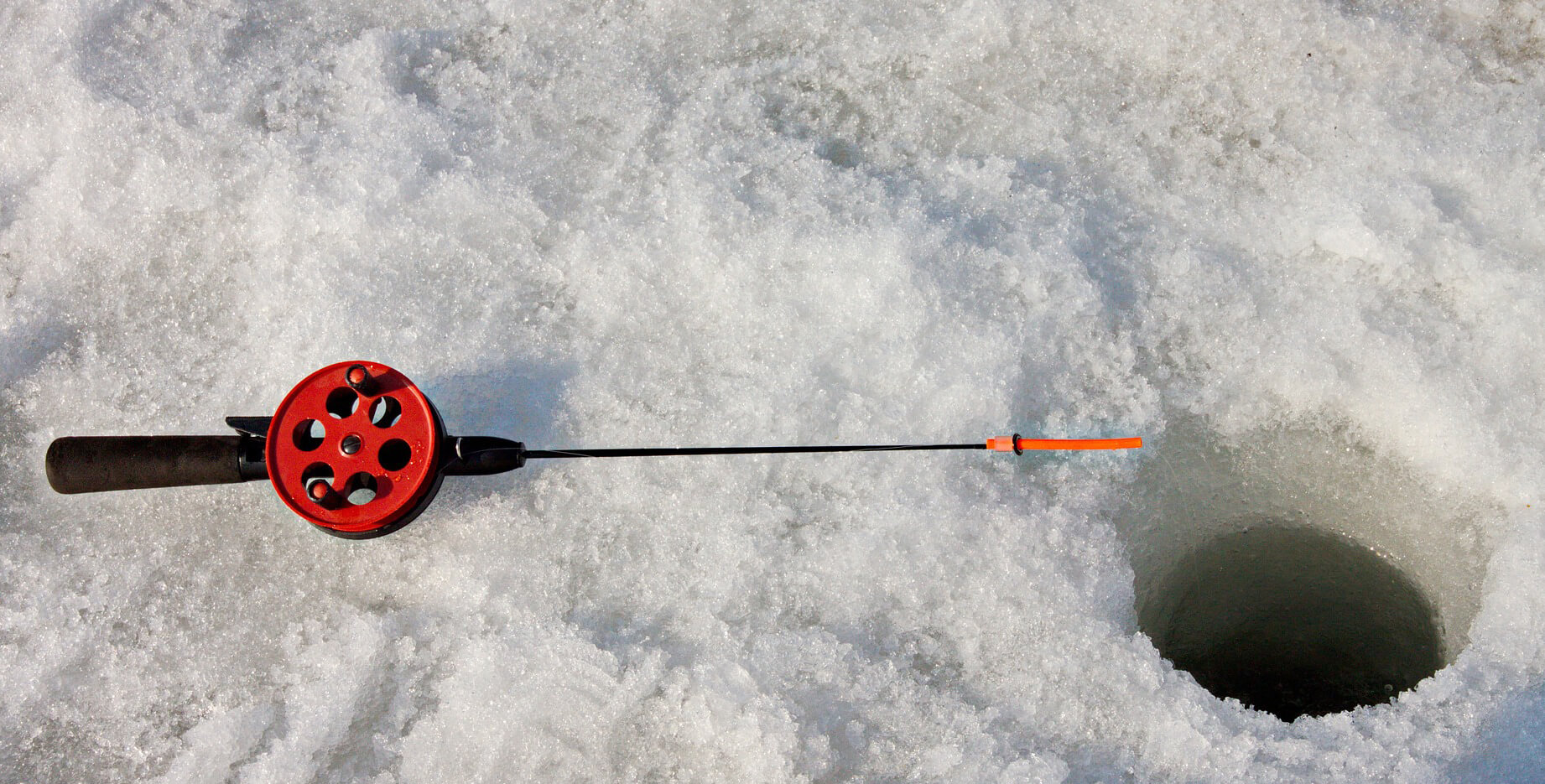
A large predator is caught mainly on a winter spinning rod plus a wobbler, spoon bait or heavy baits such as “devils” and “witches” in a massive embodiment. True, in the wilderness, they seriously give up their positions – it is better to postpone them until the last ice and pike ridge. But on live bait tackle, represented mainly by zherlitsa, you can also lure a passive predator of trophy articles.
In all cases, the thinnest rigs and small baits are used so as not to scare off passive fish and provoke them to attack. Fishing is carried out mainly from the bottom, where stocks of tasty bloodworms lie, and the fish is looking for food there.
Experienced anglers advise not to be limited to one tackle and constantly change fishing tactics until the desired result is achieved.
Marmooska jig
The most popular way to catch fish in winter is with a jig with a bloodworm( or Mormishka, or Mormyshka, or Gammarus) . The smallest jigs with a weight of 0.1 gram or more show themselves best. It is best to choose tungsten baits. On especially cloudy days, many anglers prefer brightly colored jigs (orange, red, light green, and so on).
The rod is mainly a nodded rod, very light, with the most sensitive guard. In tandem with it, a very delicate rig also acts. The use of winter fluorocarbon is encouraged: it is more expensive than monophile, but it fully justifies its use. The fluorocarbon line is absolutely invisible in the water, which is especially important when fishing in deep winter conditions: if the fish suspects something, it simply will not fit the bait.
The freshness of the bait is also fundamental: the freshest and largest bloodworm is chosen for the bait, which is the basis of the fish food base in winter.

Rewinder
In the wilderness, rewoundless ones, for the most part, are less catchy than the classic nozzle jigs. With a lack of experience with them, it is better not to experiment with them, because a novice angler simply will not be able to find the optimal game, which is of key importance in this method of fishing.
The game should not be rough and aggressive: delicate high-frequency vibrations are encouraged. You can experiment with pauses, put the bait for 10 seconds on the bottom, make the animation more high-amplitude and smoother – in short, you need to try.
There is an extensive class of rewinder reels, various in configuration and equipment. It includes “devils”, “goats”, “bananas”, “ants”, “carnations” and others like them. Some lures of this class can be safely considered universal: they show themselves well as rewoundless ones and work well with replanting bloodworms or larvae.
In the wilderness, it is better to fish with small bezels, equipped with all kinds of jewelry. A movable bead or a cube on a hook will not only indicate the point of attack, but also create attractive vibrations in the water.
Float
Float tackle attached to winter fishing is not as popular as nod tackle. This is understandable, since it is possible to attract passive fish with this method of fishing only by the degree of “delicacy” of the bait, which is not always possible. The bait (bloodworms, larvae) should be fed directly under the fish’s nose, so the problem of finding a flock comes first.
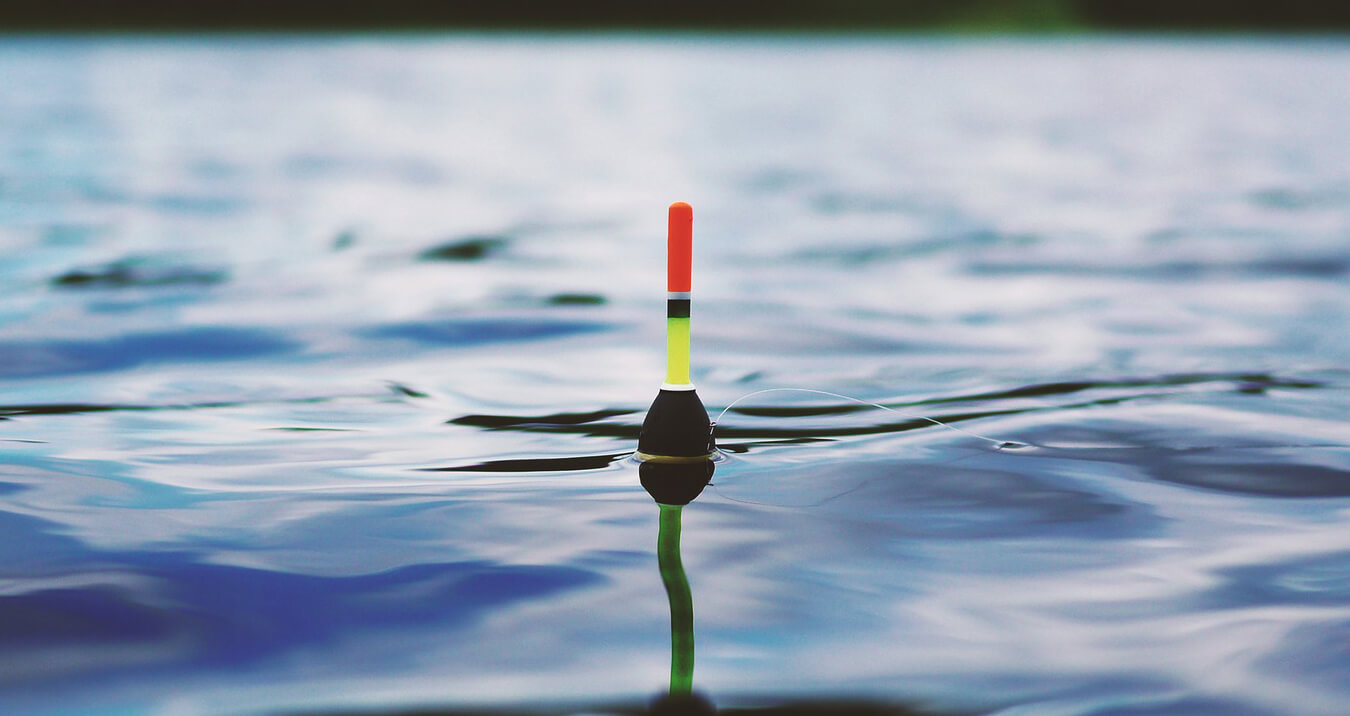
However, this is a great option for beginner anglers who have not yet learned how to properly handle a jig in thick gloves. It is enough to properly equip the tackle, pick up a good bait, drill a hole in a promising place and feed it – and throw the tackle, put it on the ice or hold it in your hands, watch the float.
With this method of fishing, usually the simplest winter fishing rod of the “filly” type is used, which is installed at the edge of the hole. A thin rig with a drop-shaped or pear-shaped sinker is used, plus an even thinner leash on which the hook is attached. The leash should not be too long for the baited hook to be in close proximity to the bottom.
The main problem is that in deep-winter frosts, the hole quickly freezes over, and the float freezes into the ice, which makes delicate bites of passive fish practically indistinguishable. Therefore, anglers recommend using light, sensitive floats and sinking them slightly below the water level using weights.
The Trigger
The Trigger including those focused on large predator: mainly for pike, at least – on the perch, burbot, perch, humpback decent size. Predators, unlike the civilians of our water bodies, are forced to eat almost constantly – they do not hibernate. Nevertheless, the period of food activity of a large predator is reduced to 30-60 minutes per day, so it may not be possible to get on it.
That is why it is recommended to find out in advance the schedule for biting fish in a particular body of water. Usually, some activation of the predator is observed in the morning hours – at this time, girders should be installed.
Requirements for increasing the delicacy of the rig are also relevant for the zherlitsa. Some anglers give up on leashes altogether, others compromise between strength and stealth, using large-diameter fluorocarbon, which even a pike will not bite through.
The highest demands are placed on the quality of live bait. You can try to fish with ice cream or just a fish that has gone cold, but this is unlikely to bring the desired result. The bait must be alive and active so that the sluggish predator can feel the irresistibility of the vibrations it creates. Perch is ideal, it is distinguished by excellent vitality.
By the way, the trigger is an ideal tackle for catching burbot, which is just getting ready for spawning and is more active than ever. Here you can even catch it on a shop sprat or a piece of rotten meat.
The balancer also flashed
Artificial lures that require active animation are not the best choice for fishing in the wilderness. Their performance is low, and it takes an unreasonable amount of effort to drill many holes (fishing using the running method).
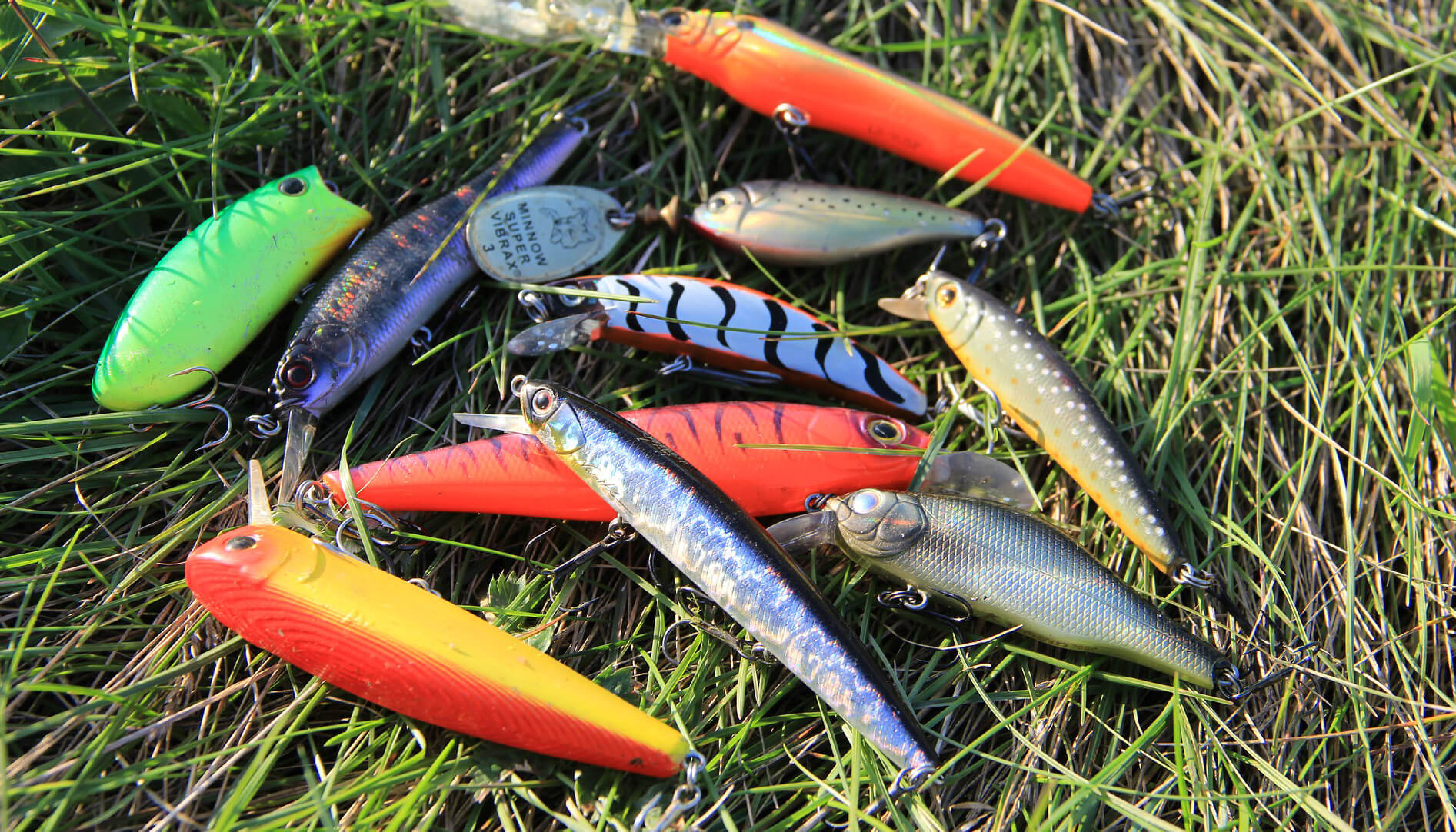
However, fans of winter spinning do not neglect the spinner and balancer . For vertical lure, mainly light petals are used that can seduce a sluggish predator.
The balancers are taken small, 3-5 cm in size. It is recommended to experiment with the amplitude of oscillations, which sets the trajectory of the bait in the water, to change the horizons and frequency. One hole is fished for no longer than 3-5 minutes, then the next one is drilled at a distance of 8-10 m from the previous one.
This option is definitely not suitable for beginner anglers, because the pros often return empty from the deaf ice.
Fishing tips for specific types of fish
Almost all inhabitants of our reservoirs reduce activity in the winter months, and some simply fall asleep. Therefore, for example, fishing for crucian carp, carp or catfish from the ice is simply futile – they are in suspended animation and do not eat at all.
Other representatives of the freshwater ichthyofauna, although they become lethargic, do not completely refuse food even in the dead-winter months. With knowledge, experience and appropriately prepared gear, hunting for them can be effective.
Perch
Fishing for bass during the harshest winter months can be very rewarding. As a matter of fact, the striped robber(Brycinus lateralis) makes up the bulk of the catch of a fisherman in the wilderness. It eats all year round, but in the most severe frosts and it loses activity somewhat.
It has been noticed that the best bait is a classic jig with a bloodworm. You can also experiment with small beads, especially with your favorite “cat’s eye” perch – a jig, supplemented with a green bead. Sometimes not only minke whales go to it, but also a solid humpback (provided that it is generally in the reservoir).
Classic animation – high frequency dribbling. But if the striped robber is picky, then you should experiment with the game, adding short pauses, slow falls, reverse dribbling, and so on.

Pike
Active pike fishing in the dead months becomes the lot of the most experienced anglers – during this period it is better for beginners to switch to passive tackle or choose easier prey. Some masters manage to provoke a predator to take a bite when fishing with a winter spinning rod with a spinner or a small wobbler, and sometimes even with silicone. Small balancers also show themselves well. The game should be slow, expressive with long pauses.
Catching pike on trigger rod holders in winter is an activity for especially patient anglers: you just need to load the tackle with an active live bait and wait. The basic principles of rigging remain the same: fluorocarbon leash or lack thereof, thin rigging. Even a very large predator resists weakly during this period, so you can even pull it out of the hole using delicate rigs, which, in general, are not intended for this. But if the cunning beast notices the steel of the leash, she will not dare to attack.
The most important thing is to find the location of the spotted thunderstorm of our reservoirs, because the energy-saving pike attacks the bait only when it is served in the immediate vicinity of its mouth.
For winter, pike is caught in the same place as in summer – in snags and near other natural shelters, along the edge, near pits, and so on. A sure sign of the presence of pike in a particular place will be an abundance of fodder fines. Where other fishermen haul roach and perch, pike is more likely to be present.
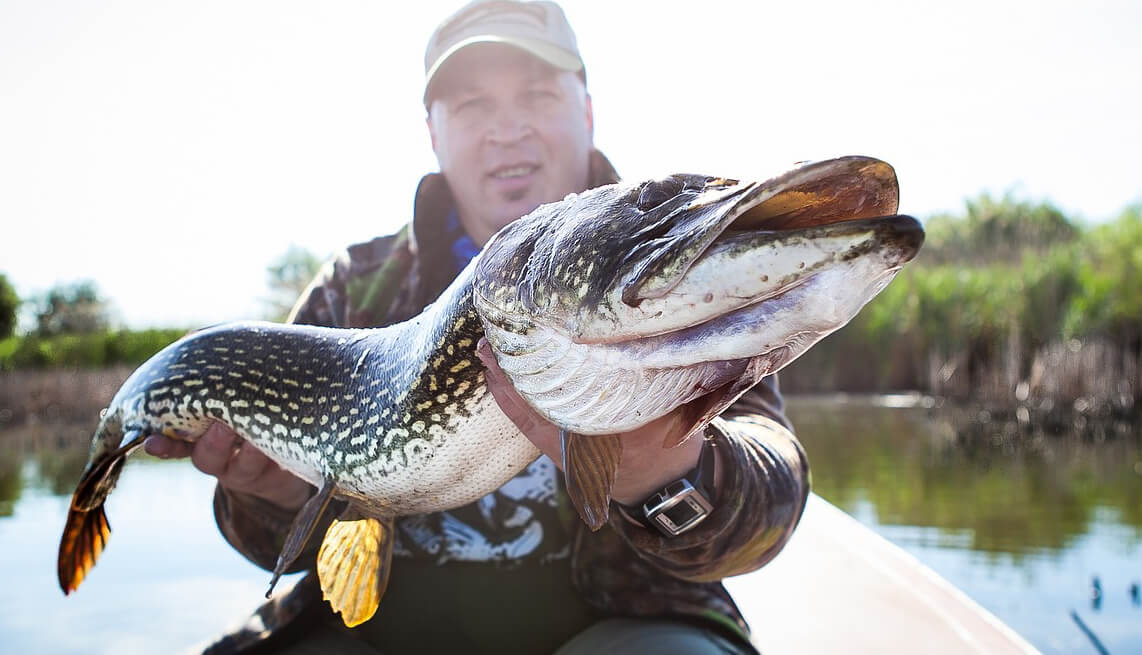
Zander
The Zander (Pikeperch) is a fish that prefers significant depths, and in the harshest months of winter it generally becomes difficult to reach. It makes no sense to look for it in shallow water, in principle.
Nevertheless, there are masters who can attract the fanged even in this difficult period. The Zander often unite in groups in order to cover the maximum area with tackle and not to lose sight of the flags. The best bait is bleak, but in the absence of such, the hooks are baited with a store sprat.
For active fishing, special pike perch jigs and spinners are used. Small wobblers and vibes are distinguished by relatively good performance, but they do not work traditionally, in a wide amplitude, but in short throws a couple of centimeters, interspersed with pauses of arbitrary duration.
Roach
The roach remains relatively active throughout the entire wilderness. It is she, along with the eternally hungry minke perch, that constitutes the main catch of the fisherman in this harsh period. If you run into a good flock, you can train several dozen roach in just an hour.
The first thing an angler needs to know is the roach feeding schedule at a specific location. In some bodies of water, this fish bites much more actively at night. There she is successfully caught with glowing jigs.
The classic tackle is an active winter fishing rod, and the bait is a jig equipped with a bloodworm, maggot or burdock seedhead moth larva. As a rule, replanting is also done to the rewinder – this increases the effectiveness of fishing.
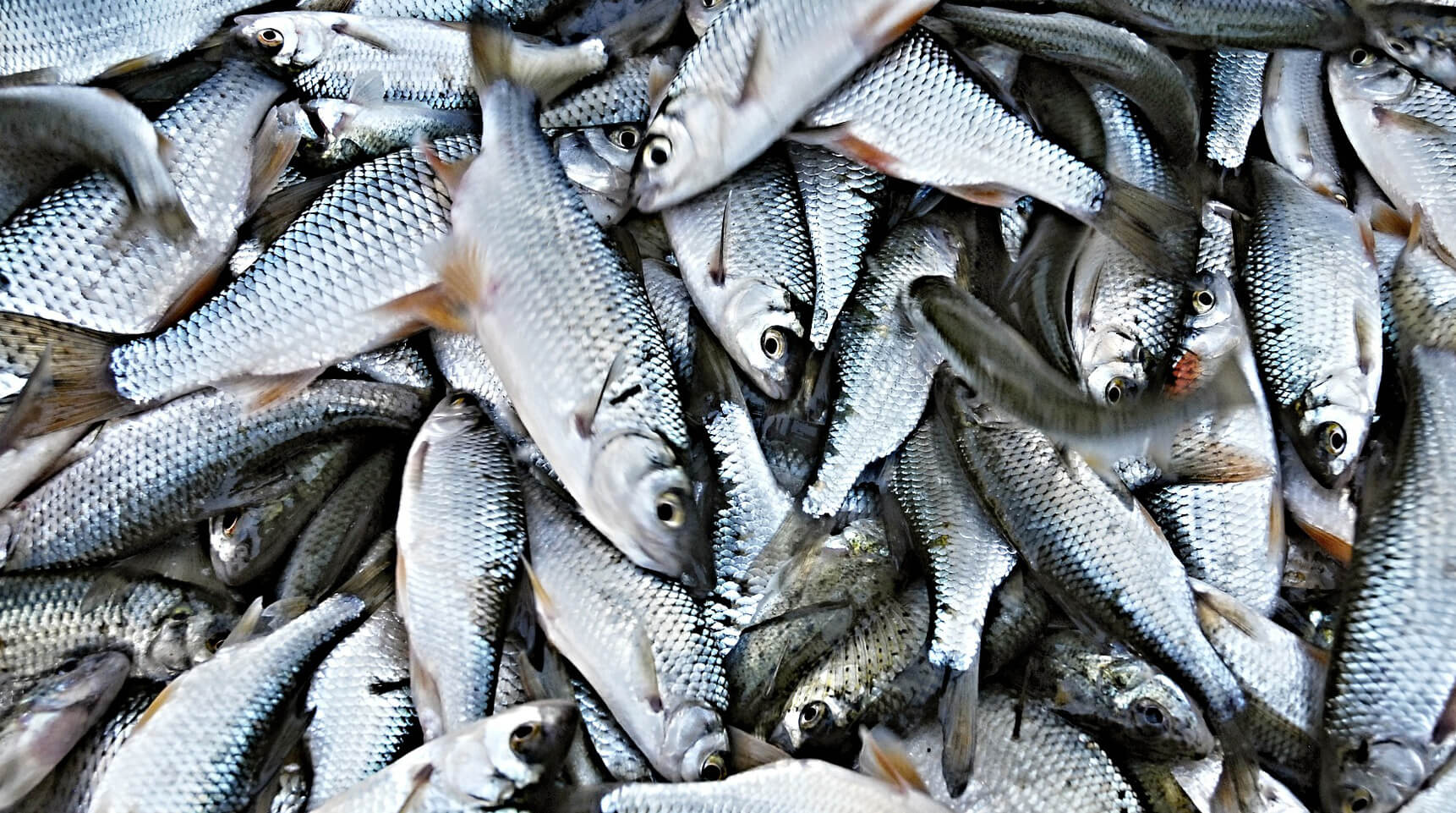
Roach is also harvested for stationary float and nod tackle, but the wilderness makes certain adjustments to fishing tactics. You need to be prepared for constant transitions. Often the roach moves away from the holes because it was frightened by a flock of perch or pike, but this does not mean that the bite will spread throughout the entire reservoir.
It should be hooked at the slightest suspicion of a bite, because like any other fish, the roach takes the bait very delicately during this period and often releases it from the mouth without swallowing properly.
Bream
It is not worth looking for bream in shallow waters: this fish leaves for wintering in pits. But sometimes she comes out of them even in the wilderness in search of food. It is clear that the most promising places of occurrence of bloodworms will be near the wintering pits. The absence of rot is fundamentally important – bream does not like a total oxygen deficiency.
Fishing is carried out mainly by the running method, on the jig with the addition of bloodworms, although some fishermen also successfully use the dough. In stationary fishing, a particularly fundamental point is the issue of adequate complementary feeding and a reasonable location of the holes.
You should not count on a rich catch, especially at first. You should be prepared for the fact that the catch will be a couple of specimens. Moreover, these will not be trophy specimens, but creepers weighing 300-500 grams maximum.
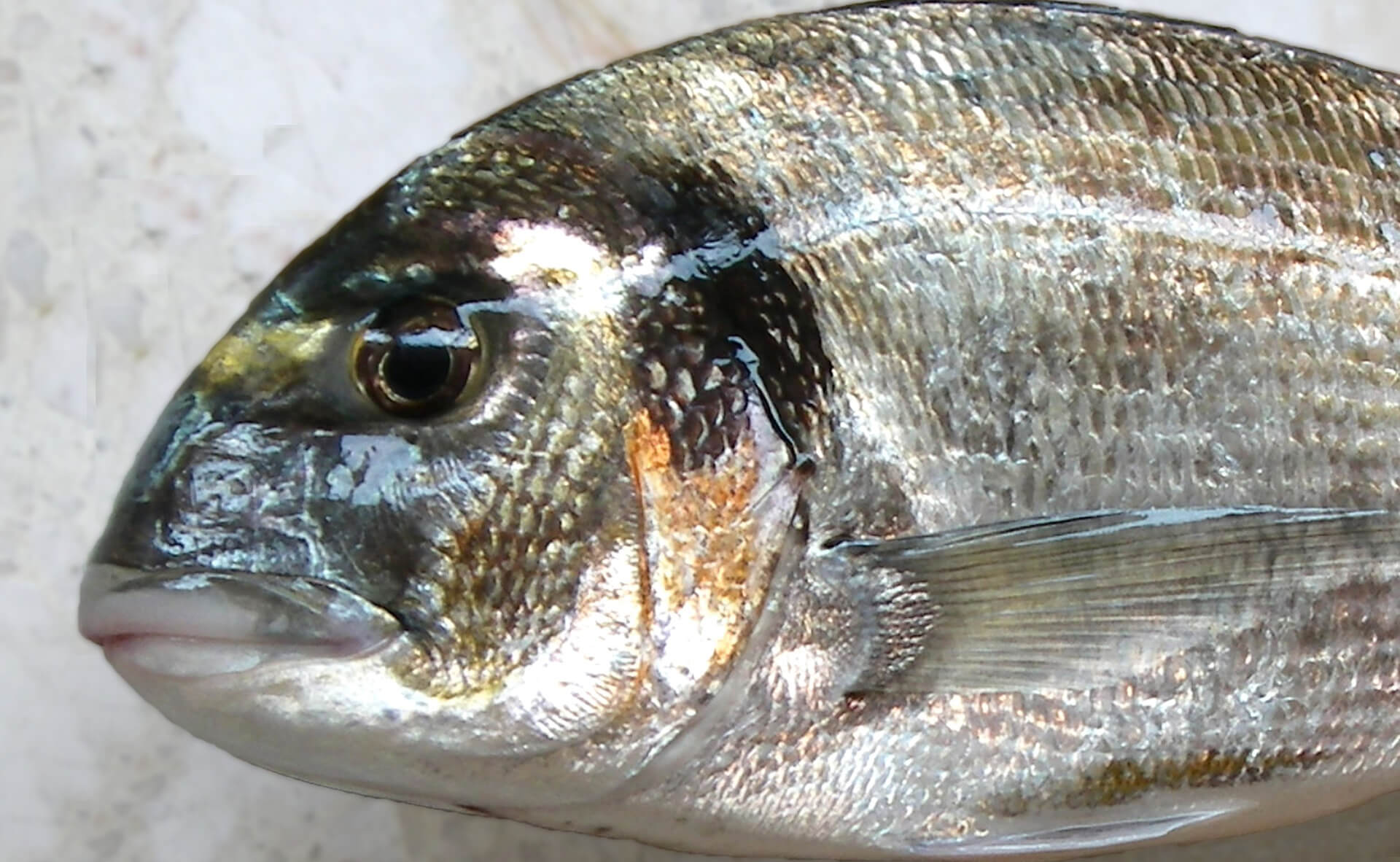
Burbot
The wilderness is a fertile time for catching burbot. This fish from the cod family loves the cold: it even lays eggs in February. It can be successfully hunted on the eve of the spawn.
Burbot is a convinced idealist: he never unites with his own kind. He is also a slave to habits: each individual has a personal food path, which it regularly bypasses in search of food. It is almost impossible to catch burbot outside this trail.
If the location of the burbot is found, then it is already a matter of technology: within the limits of its lands, it bites on almost everything. Single fishermen successfully catch freshwater cod with baits, freshwater shrimp, “snorkels”. Burbot is absolutely not picky about baits; in the absence of live bait, it takes fish, shrimp and rotten meat into pieces. There is no need to weaken the tackle: a burbot that sees food is no different.
Tips for Beginner Anglers
At the end of the post, it’s time for our traditional tips for aspiring anglers:
- The wilderness is not the best time to get into fishing every day. It is better to start your acquaintance with winter fishing closer to the beginning or end of winter, when the fish are more active and the frosts are not so severe.
- Do not forget about your own comfort and safety. Purchase quality winter fishing clothing and shoes. Never warm yourself with alcohol – it only gives deceptive warmth. Despite the fact that deep winter ice is usually thick and questionable areas can be found on it. Go around areas with a color-changed ice, test the path of the pawns, have a “rescue vehicle” in your arsenal.
- Be prepared to spend. Even at first, winter fishing will require serious financial investments. You will have to buy special clothes and shoes, a good fishing box, a productive ice screw, and other accessories. True, winter fishing rods are much cheaper than summer ones, but this is the only item of savings.
We wish you rich catches, good health and true fishing in the bosom of nature!

